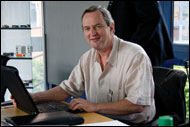 DILAX has been a world leader in people counting technology for over 20 years. Based on infrared sensors, the DILAX people counting system ascertains the number of visitors moving around in an unstructured fashion 24 hours a day, 365 days a year. The sensors can be mounted above or to the side of passageways so they are barely noticeable. They count the human traffic flow precisely and reliably, at any time of day and independent of external influences such as temperature or rain, and allow operators to access the recorded counting data at the push of a button. Installing infrared sensors can sometimes be difficult or impossible, given the dictates of construction, style or other factors. DILAX has introduced a new addition to its counting system for just such cases, DILAX OptoCount, a unique technology using cameras, not infrared sensors, that can focus on any doorway or floor area and continuously monitor footfall. Nigel Fountain, Managing Director of DILAX Systems Ltd, the UK and Ireland operation, spoke to The Grocery Trader.
DILAX has been a world leader in people counting technology for over 20 years. Based on infrared sensors, the DILAX people counting system ascertains the number of visitors moving around in an unstructured fashion 24 hours a day, 365 days a year. The sensors can be mounted above or to the side of passageways so they are barely noticeable. They count the human traffic flow precisely and reliably, at any time of day and independent of external influences such as temperature or rain, and allow operators to access the recorded counting data at the push of a button. Installing infrared sensors can sometimes be difficult or impossible, given the dictates of construction, style or other factors. DILAX has introduced a new addition to its counting system for just such cases, DILAX OptoCount, a unique technology using cameras, not infrared sensors, that can focus on any doorway or floor area and continuously monitor footfall. Nigel Fountain, Managing Director of DILAX Systems Ltd, the UK and Ireland operation, spoke to The Grocery Trader.
The Grocery Trader – Where and when was DILAX founded, and who by? Are they still involved in the business? Who owns Dilax now?
Uwe Hinrichsen formed DILAX in Germany over 20 years ago. Mr. Hinrichsen is still the CEO of the DILAX Intelcom Group, and the owner of the company.
 GT – How big is the DILAX group worldwide in turnover and staff numbers? Where is the world head office? Which countries does DILAX trade in?
GT – How big is the DILAX group worldwide in turnover and staff numbers? Where is the world head office? Which countries does DILAX trade in?
Worldwide turnover is approaching € 10Million and we have a staff of around 60 employees, about half located in our Berlin head office. We have sales offices or subsidiaries in most major European countries, and a subsidiary in North America.
GT – When did you set up in the UK? What proportion of group turnover is generated in the UK?
DILAX set up our UK subsidiary in late 2007. Last year the UK generated about 10% of group turnover.
GT – Where is your UK office? What operations happen there?
Our UK office is located in London, and from here we support UK and Ireland customers and offer consultancy and data management services.
GT – When did you (Nigel) join DILAX? When did you become MD? What does your role involve, day to day? Are you personally involved with individual customers?
I joined DILAX Intelcom GmbH in May 2007 with the task of setting up the UK subsidiary. I became the MD of DILAX Systems UK Ltd when we incorporated the company in December 2007. As we are a small operation in the UK, my role is anything and everything required to develop our business and to keep our customers delighted that they chose the DILAX solution for their people counting requirements.
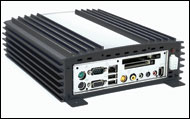 GT – How do you supply and install your people counting systems in the UK – direct, or through distributors?
GT – How do you supply and install your people counting systems in the UK – direct, or through distributors?
We supply and install our stationary systems direct to the customer, with the assistance of specialist installation engineers sub-contracted to do the electrical work to our design.
GT – What different industry sectors are your systems used in, in the UK?
We supply our systems broadly to two distinct industry sectors in the UK. We have our stationary customers such as BOSE, and a very significant market in the transport sector. If you have travelled frequently on the UK Rail network, there is a strong probability you have been counted on and off the train by one of our systems.
GT – What proportion of your systems are used in UK retail outlets?
The UK retail sector is a new market for us just now: by far the majority of our systems are installed in the transport sector.
GT – What do your UK retail clients use the information from your people counting technology for? What different type of reports can be generated?
A typical report will be comparing footfall between stores so that the retailer can make comparisons between footfall and other management data such as revenue per store, local promotions and so on. The variety of different reports available is almost endless: for instance, waiting time at checkouts, traffic per aisle or dwell time in a particular area of the store could be measured.
GT – What are the elements in a standard infrared people counting system? Do you make all these components yourselves?
There are four main elements in these systems; the sensors themselves, a control unit called the PCU100, a data logger called a BBM (which simply stands for “Black Box Module”) and a communications module, which typically transmits the count information via a Wi-Fi link. All our systems are designed by us and manufactured by sub-contractors, who we carefully monitor for quality and reliability.
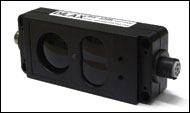 GT – Where do you make the equipment you sell in the UK? What proportion of your UK installations is infrared-based?
GT – Where do you make the equipment you sell in the UK? What proportion of your UK installations is infrared-based?
Our sub-contractors are based in Germany and Switzerland. About 90% of our installations in the UK are currently using infrared technology. However we see the optical system gaining rapid acceptance, as it offers a number of advantages to our customers such as unobtrusive installation and the ability to place the sensors at the much greater ceiling heights found in retail environments.
GT – How many infrared installations do you have in the UK retail sector?
As the UK retail sector is new for us, we do not currently have any infrared installations in UK retail outlets. All our infrared installations in the UK are in the transport sector.
GT – Can store traffic data from your systems be read remotely at retailers’ head office?
Yes, our system is designed to transmit all the traffic data to a central database, which can be located anywhere. The access to the data is via a web-browser page so the customer can access the system and generate reports from anywhere where they have Internet access and suitable access rights.
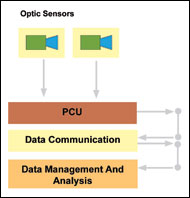 GT – Turning to OptoCount, what does this technology do?
GT – Turning to OptoCount, what does this technology do?
OptoCount registers people and the direction they are moving via CCTV cameras featuring built-in image conversion technology. The result is an extremely flexible installation and the ability to adjust the point at which traffic is counted by positioning a virtual line on the CCTV image. When a person crosses this line they are counted. The line can be moved to anywhere that the camera covers.
GT – Does that involve filming, like CCTV?
No filming is involved in this operation, unlike with security technology. Only the individual, sequentially produced images from the analogue-to-digital conversion are analysed for motion and assessed. The targeted use of lenses with varying focal distances enables areas where human traffic is of interest to be monitored from many angles. This simplifies the issue of the placement of people counting sensors in buildings and entrances, allowing more discreet installation and making it easier to integrate the counting technology within a given interior design. The technology allows counting which tracks multiple directions of movement.
GT – In layman’s terms, how is OptoCount different to standard IR counting technology?
The three significant differences are firstly, that Optocount allows installation at any ceiling height whereas infrared sensors must be installed no more than 2.4M above the floor, secondly the technology allows flexibility of the counting position as described above, and even multiple counting lines to allow area counting or dwell time, and lastly, there can be a cost benefit to the user because cameras can be relatively very inexpensive compared to infrared sensors.
 GT – Where was OptoCount developed? Which other countries is it available in besides the UK? When was OptoCount launched in the UK? How many installations have you carried out here so far?
GT – Where was OptoCount developed? Which other countries is it available in besides the UK? When was OptoCount launched in the UK? How many installations have you carried out here so far?
Optocount was developed in our Berlin head office by our own development team and with video technology acquired from specialist development companies. It is available throughout Europe through our sales offices and subsidiaries. The installation at BOSE is our first installation in the UK so far.
GT – How has this technology (OptoCount) evolved – was it in response to a specific customer request?
We recognised the limitation of height installation inherent in the infrared product and also recognised that our infrared system, developed for the stringent requirements of the transport industry, was a relatively expensive investment in the retail sector. Optocount was developed to address those limitations.
GT – What does the OptoCount system as you install it comprise?
The OptoCount system components are video cameras (optic counting sensors) in various models and designs: People counting unit (PCU) with data bus interface or radio module: DavisWEB Enumeris software for data management and analysis.
GT – How different is the OptoCount system to other systems on the market?
There are many systems on the market, with a variety of different methods of recognising a person through analysing the changes in video patterns. Ours uses a “pixel cloud” concept that links reference points around a moving object and analyses whether those points fit the pattern required for it to be recognised as a person.
GT – How much more expensive is OptoCount than your IR people counting systems?
Normally an Optocount system will be less expensive than the IR equivalent, and with a further saving in installation costs.
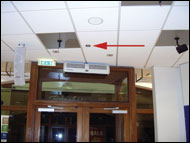 GT – What kind of in-store network is needed to run either your IR systems or OptoCount? Can stores’ existing data networks support this technology as well? How easy is it to integrate and interface your people counting systems into retailers’ existing IT systems?
GT – What kind of in-store network is needed to run either your IR systems or OptoCount? Can stores’ existing data networks support this technology as well? How easy is it to integrate and interface your people counting systems into retailers’ existing IT systems?
Usually the DILAX system simply uses the existing Wi-Fi installation in the store. Or, occasionally we connect the system directly to the existing LAN through an Ethernet connection. Our software easily integrates within the IT environment of our customers. If the customer wishes to integrate the counting data with other applications, we have a development team that can work with the customer to effect this integration.
GT – How easy is it to upgrade from an IR system to OptoCount? Do you see UK retail customers who already have your IR systems migrating to OptoCount?
A customer can install a mixture of IR and OptoCount sensors within the same system, according to the installation environment. OptoCount may be less suitable in difficult lighting environments, for instance. We always offer a free consultancy service to our customers to assist them in determining the best configuration for their operations. We see OptoCount as the most suitable product in the retail environment going forward for the reasons described above: unobtrusive installation, higher ceilings, lower costs and positioning flexibility.
GT – I understand you recently fitted out a reference retail site for BOSE Speakers. How did that come about – why did Bose choose your people counting technology? Can you talk us through the equipment you have installed? What are they going to use the people counting information for?
This is described in the separate case study – click here to read.
GT – How long does it take to plan and install an OptoCount system? What’s involved?
The main necessity is a site visit to each location to determine the physical layout, the availability of mains power and the communications available. The system is very easy to install, and installation can often be carried out overnight so that store opening times are not disrupted.
GT – What are your targets for installations of people counting systems in the retail sector in the UK and Ireland over the next 12 months?
Our target is to grow our retail sector to 20% of our overall business in the UK in 2009. It’s hard to quantify that in terms of numbers of systems, as that will depend on many factors such as the number of stores in each system.
GT – Finally, where do you see DILAX Systems UK going from here?
We see rapid expansion over the next few years due to the many factors that are increasing interest in people counting systems both from the legislative side – Health and Safety in the stationary environment and overcrowding monitoring in the transport environment – and from the commercial side, as companies recognise that there can be a bottom-line benefit in monitoring the flow of customers through their facilities and making commercial decisions accordingly.
Dilax Systems UK
Tel: 020 7223 8822
www.dilax.com




Comments are closed.